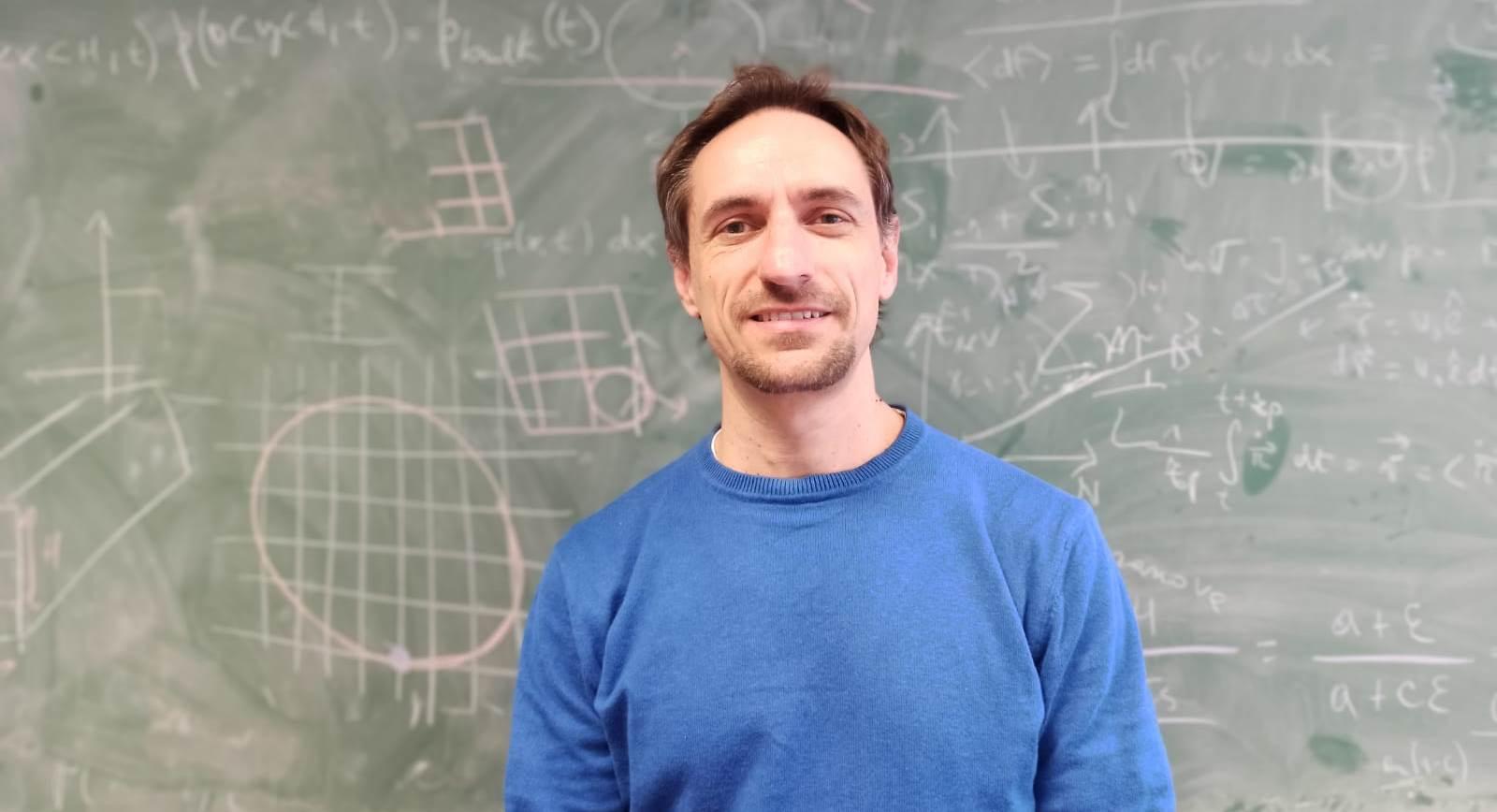Fernando Peruani in Nature Physics

Prof. Fernando Peruani, based at the Laboratory of Theoretical Physics and Modeling (LPTM) at CY Cergy Paris University, is researching the movement patterns of small sheep flocks. His work in the respective area is published in leading international journals.
In the tranquil surroundings of green hills in the countryside, a small flock of sheep peacefully grazes. Their movements follow a choreography that appears both orderly and random. They move as a group, each individual taking turns to advance before coming to a halt and resuming grazing further ahead. This collective coordination is observed in various animal species, such as birds swarming into the sky or fish elegantly zigzagging in tight schools. Biologists study this phenomenon, and physicists develop mathematical models to formalize their observations.
Mathematical descriptions of living organisms
Prof. Fernando Peruani's research focuses on mathematically describing living organisms through an interdisciplinary approach that combines physics and biology. After years of developing tools to describe bacterial movements, he discovered that similar mathematical models might be used to investigate the motions of various animal species. The scientific journal Nature Physics recently published his findings. [1].
Active matter: a rapidly advancing field
Prof. Peruani's work is closely related to the research on active matter, which has seen rapid growth since its emergence about thirty years ago. A EUTOPIA conference titled "Active Days EUTOPIA: Challenges in Active Matter" was held at CY Cergy Paris University from December 5 to 7, 2022, focusing on this field. Active matter research aims to utilize physics to understand biological systems across all scales, including cells, bacteria, tadpoles, birds, and sheep.
Previous research in this field has focused chiefly on brief moments of observation, such as when starlings take flight. However, Prof. Peruani and his team aim to model the overall behaviour of small sheep groups over much longer time scales by breaking down different movement phases, such as grazing with heads down or alerting with heads up. Due to the complexity involved, they depart from existing models and start their calculations from scratch. Their research project incorporates Newtonian physics, mechanics, Markov chains, stochastic calculus, and probabilities.
Collaborative research yields promising results
Prof. Fernando Peruani collaborates with Luis Gómez-Nava from the J. A. Dieudonné Laboratory at the Université Côte d'Azur in Nice, as well as biologists from Richard Bon's team at the Centre de recherches sur la cognition animale at the Université Toulouse III. At the LPTM, he collaborates with students and post-doctoral fellows to develop a theoretical framework for data modelling.
The current findings challenge the widespread belief that sheep are simply followers. A member initiates every movement within the flock, and all individuals can act as leaders. This democratic model benefits the whole group by simplifying decision-making, optimizing information transmission, and facilitating group cohesion. Future research will explore whether the developed models apply to larger sheep flocks or not. The collective intelligence of sheep still holds many mysteries yet to be uncovered.
[1] Gómez-Nava, L., Bon, R. & Peruani, F. Intermittent collective motion in sheep results from alternating the role of leader and follower. Nat. Phys. (2022). https://doi.org/10.1038/s41567-022-01769-8

